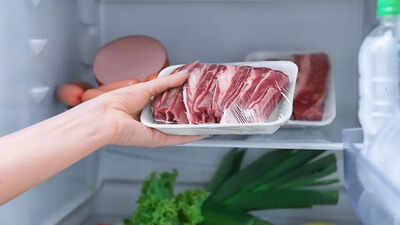
Keeping your refrigerator well-organised is not just about neatness, it is crucial for food safety and family health. Improper storage can lead to cross-contamination, faster spoilage, and foodborne illnesses, putting your loved ones at risk. Different foods, raw meats, fruits, vegetables, dairy, and ready-to-eat items, require specific storage methods to maintain freshness and prevent bacteria from spreading. By understanding how to separate these foods, maintain proper temperature, and use airtight containers, you can preserve flavors, extend shelf life, and create a hygienic kitchen. Proper fridge organization is an essential step toward safer, healthier meals for your household.
What is cross-contamination in the fridge
Cross-contamination occurs when harmful microorganisms such as bacteria, fungi, or viruses transfer from one food item to another. This often happens through direct contact or via liquids that drip from raw meat, poultry, or seafood. While refrigeration slows bacterial growth, it does not entirely stop it. That’s why separating different food types is vital. Even small spills or contact between raw and ready-to-eat foods can cause serious health risks. Understanding how cross-contamination happens helps you take preventative measures and ensures the safety of your meals.
5 common fridge food pairing mistakes that risk contamination
Raw meat and ready-to-eat foods
According to a study published in NIH, The study highlights that improper storage practices, such as placing raw meats on higher shelves, can lead to cross-contamination risks. Raw meats, including chicken, beef, pork, and fish, must never be stored alongside ready-to-eat items such as cold cuts, cheese, salads, or leftovers. Raw meat can release juices that carry bacteria, which can contaminate other foods. To prevent this, always store raw meat in sealed containers or plastic bags on the bottom shelf of the fridge. This placement ensures that any drips do not fall onto other items.
Fruit and vegetables vs. meat
Fruits and vegetables, particularly those eaten raw, should always be stored away from raw meat and fish. Ideally, keep them in the fridge’s vegetable drawers, which are designed to maintain optimal humidity and freshness. This separation not only prevents contamination but also helps produce stay crisp and flavorful for longer.
Cheese, sausages, and raw eggs
Cheeses, yogurts, cold cuts, and sausages should not be placed near raw eggs, which can carry bacteria such as Salmonella. Eggs should remain in their original cartons to limit exposure to contaminants. Storing these items separately ensures that bacteria from eggs do not spread to ready-to-eat foods.
Foods with strong aromas and delicate foods
Strong-smelling items like onions, garlic, certain cheeses, or fermented foods can easily transfer their odors to delicate foods such as milk, eggs, or desserts. To prevent flavor contamination, store strong-smelling items in sealed jars or airtight containers. This preserves both the aroma of the pungent foods and the taste of sensitive items.
Leftovers and raw foods
Leftovers should always be stored in tightly sealed containers and kept separate from raw meats, fish, or eggs. Placing them on the top shelves of the fridge is recommended, as this is the least likely area for drips or contamination. Proper storage extends the shelf life of leftovers while keeping them safe to eat.
Extra tips for safe refrigerator organization
- Use airtight containers: Containers with secure lids prevent contamination and reduce the transfer of odors between foods.
- Clean your fridge regularly: Wipe down shelves and drawers weekly using a mixture of water and bicarbonate of soda or vinegar to kill bacteria and remove residue.
- Maintain the right temperature: Keep the fridge between 1°C and 4°C (33°F to 39°F) to slow bacterial growth and preserve food quality.
- Avoid overloading the fridge: Crowding prevents proper cold air circulation, which can lead to uneven cooling and faster spoilage.
Proper fridge organization is essential not only for preventing foodborne illness but also for extending the freshness of your groceries. Separating raw meat, vegetables, eggs, and ready-to-eat foods protects your family’s health and ensures your meals remain safe. By following these simple storage rules, using airtight containers, and maintaining a clean fridge, you create a hygienic and efficient kitchen. Taking the time to arrange your fridge thoughtfully is an investment in well-being, helping you manage food safely while reducing waste and keeping your family healthy.Disclaimer: This article is for general informational purposes only and is not a substitute for professional medical advice, diagnosis, or treatment. Always seek the guidance of a qualified healthcare provider regarding any medical condition or lifestyle change.Also Read: 9 air fryer mistakes that ruin your meals and how to fix them







